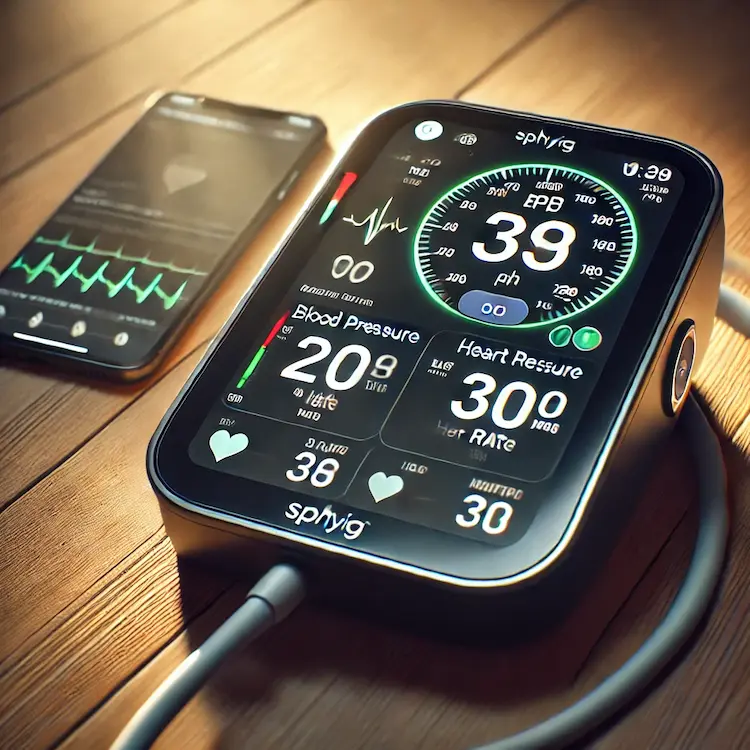Atrial fibrillation (AFib) is a common heart rhythm disorder that increases the risk of stroke, heart failure, and other cardiovascular complications. One of the key challenges in managing AFib is maintaining optimal blood pressure (BP), as fluctuations can worsen symptoms and lead to severe health consequences. This is where accurate and reliable blood pressure monitoring plays a critical role.
Sphyg, a leading provider of clinically proven medical equipment, offers innovative solutions for blood pressure monitoring, helping individuals with AFib track their cardiovascular health effectively. This article explores the importance of BP monitoring in AFib, different monitoring methods, and how Sphyg’s technology contributes to better health outcomes.
Understanding Atrial Fibrillation and Its Impact on Blood Pressure
What is Atrial Fibrillation?
Atrial fibrillation is an irregular and often rapid heart rhythm (arrhythmia) that can cause blood clots, increasing the risk of stroke. The condition occurs when the upper chambers of the heart (atria) beat chaotically and out of sync with the lower chambers (ventricles).
How Does AFib Affect Blood Pressure?
- Fluctuating Readings: AFib can cause significant variations in blood pressure, making it difficult to obtain consistent readings.
- Increased Stroke Risk: High BP in AFib patients raises the likelihood of blood clot formation, which can lead to stroke.
- Heart Strain: Persistent high BP forces the heart to work harder, potentially worsening AFib symptoms and leading to heart failure.
The Importance of Blood Pressure Monitoring in AFib
Early Detection of Hypertension or Hypotension
Regular BP monitoring helps detect sudden spikes or drops, allowing timely intervention.
Stroke and Complication Prevention
By maintaining stable BP levels, patients can reduce their risk of severe complications, including stroke.
Medication Effectiveness Assessment
Patients on antihypertensive or anticoagulant therapy need to track BP to ensure their treatment is effective.
Lifestyle and Diet Adjustments
BP readings can help guide necessary lifestyle changes, such as reducing sodium intake or increasing physical activity.
Comparison of Blood Pressure Monitoring Methods
| Method |
Advantages |
Disadvantages |
| Oscillometric Monitors (e.g., Sphyg digital BP monitors) |
Easy to use, provides automated readings |
May be less accurate in AFib patients due to irregular pulses |
| Aneroid Sphygmomanometers (Manual BP monitors with stethoscope) |
Highly accurate, used by healthcare professionals |
Requires proper technique, not ideal for home use |
| Ambulatory Blood Pressure Monitoring (ABPM) |
Tracks BP over 24 hours, provides comprehensive data |
Expensive, may be uncomfortable for prolonged wear |
| Wrist Monitors |
Portable and convenient for frequent monitoring |
May give inconsistent readings if not positioned correctly |

Best Practices for Blood Pressure Monitoring in AFib Patients
Choose the Right Device
- Use clinically validated monitors such as Sphyg’s advanced digital BP monitors for more reliable readings.
- Avoid wrist monitors unless recommended by a healthcare professional.
Measure BP Correctly
- Sit in a quiet place, relax for 5 minutes before measuring.
- Keep your arm at heart level and avoid talking during the measurement.
- Take multiple readings and record the average for more accuracy.
Monitor BP at the Right Time
- Measure BP twice daily (morning and evening) or as recommended by your doctor.
- Keep a BP log to track trends and share with healthcare providers.
Lifestyle Adjustments to Maintain Healthy BP
- Reduce salt and processed food consumption.
- Engage in moderate exercise but avoid extreme exertion.
- Manage stress through meditation, yoga, or breathing exercises.
- Limit alcohol and caffeine intake.
How Sphyg Supports Blood Pressure Monitoring in AFib Patients
Sphyg provides clinically validated BP monitoring devices designed for accuracy and ease of use, particularly for individuals with AFib.
Key Features of Sphyg BP Monitors
- AFib Detection: Helps identify irregular heart rhythms.
- Multiple Reading Modes: Takes three consecutive readings for better accuracy.
- Mobile App Integration: Enables data tracking and sharing with healthcare providers.
- Comfortable Cuffs: Designed for accurate placement and user comfort.
By using Sphyg devices, AFib patients can take reliable, real-time BP measurements, leading to better management of their condition.

Conclusion
Blood pressure monitoring is essential for people with atrial fibrillation to prevent complications such as stroke and heart failure. Regular monitoring, proper technique, and the use of reliable devices—such as those from Sphyg—can significantly improve AFib management. By adopting healthy lifestyle habits, tracking BP trends, and working closely with healthcare providers, patients can take proactive steps toward better heart health.
Key Takeaways
- BP monitoring is crucial for managing blood pressure with AFib to detect fluctuations and prevent complications.
- Oscillometric monitors (like Sphyg) provide convenience, but ABPM offers a comprehensive view.
- Measuring BP correctly (sitting still, using the right cuff, and recording multiple readings) improves accuracy.
- Lifestyle changes, including diet, exercise, and stress management, support healthy BP levels.
- Sphyg’s BP monitors offer advanced features for accurate AFib detection and tracking.
Actionable Recommendations for Readers
- Use a clinically validated BP monitor for home tracking (e.g., Sphyg models).
- Maintain a BP log and share results with your doctor.
- Monitor BP regularly—twice daily or as recommended by a healthcare provider.
- Adopt heart-healthy habits, such as reducing sodium intake and staying active.
- Stay informed about managing blood pressure with AFib through medical resources.

